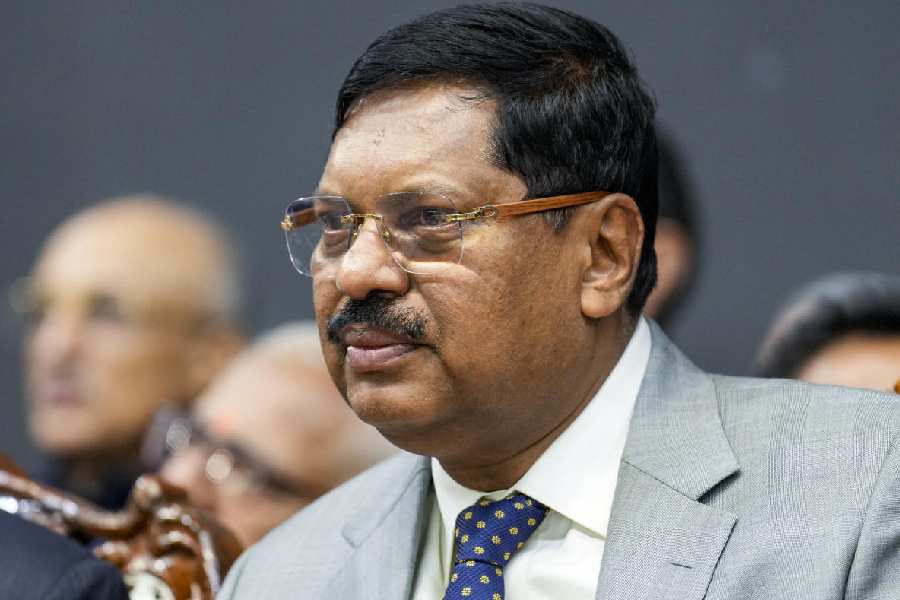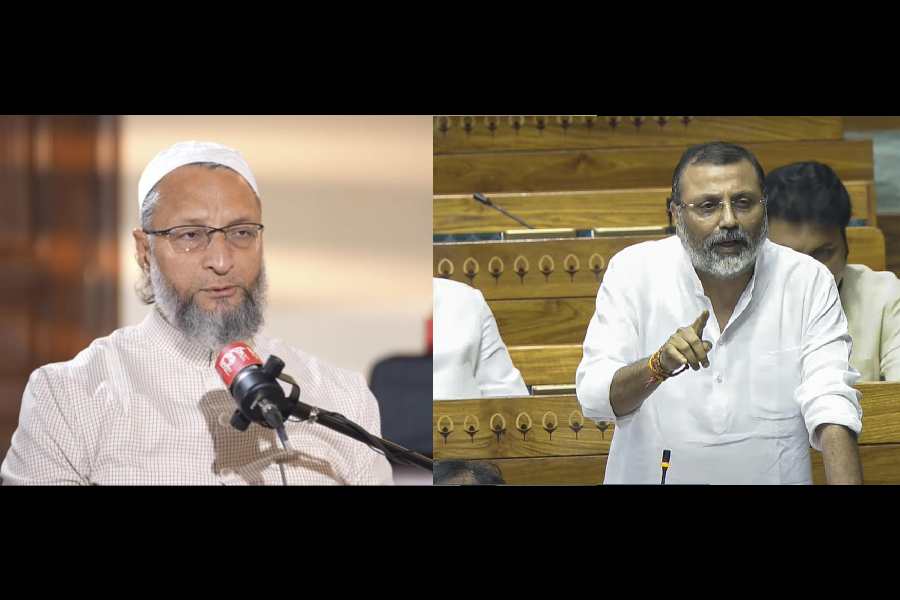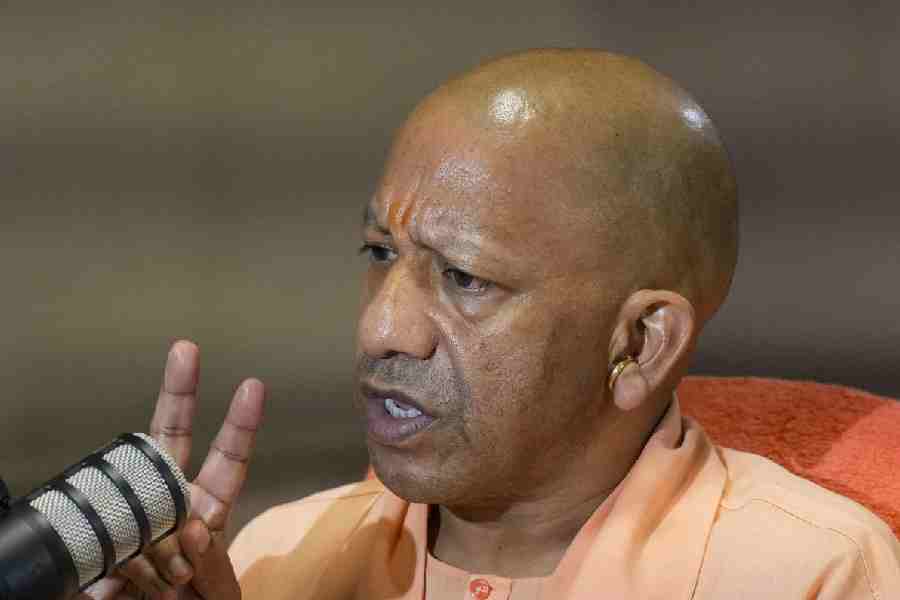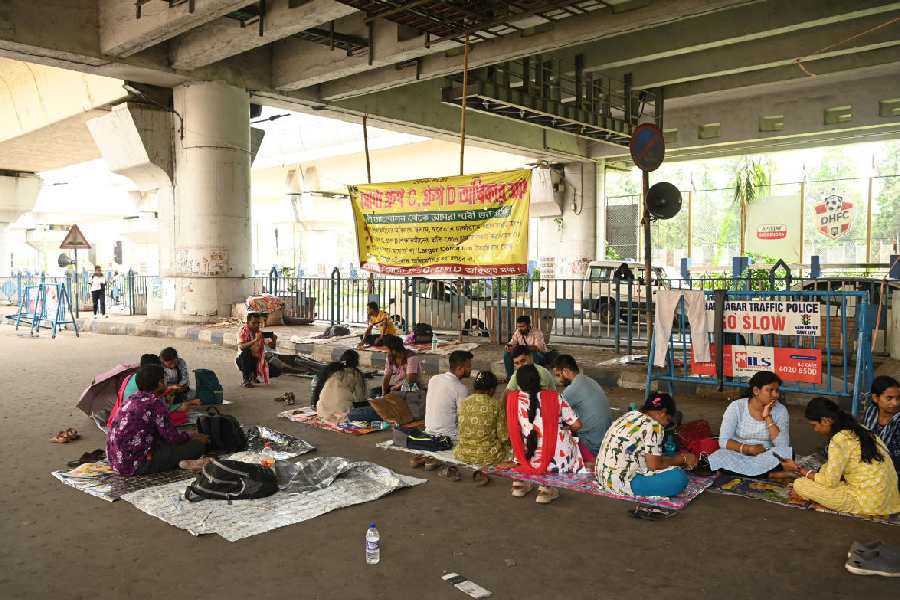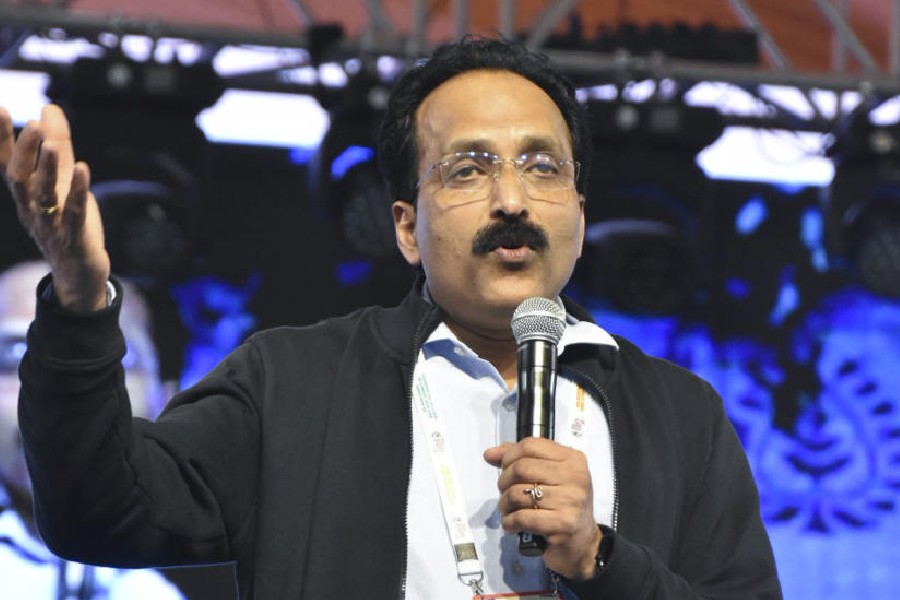New Delhi, May 16: V.K. Bajaj is used to being mocked at for his poll predictions, and May 12 was no different.
But after being proved right today, Bajaj pleaded for anonymity — an important part, he said, of the method that has helped him build a formidable resume of success in a much-vilified industry.
Narendra Modi and the BJP were not today’s only winners. In an office at the Noida Special Economic Zone, 30km from Delhi, polling research firm Today’s Chanakya celebrated its latest win — a remarkably accurate prediction of the performance of the nation’s two major political alliances.
“I don’t like being called V.K. Bajaj in quotes,” said the man behind the firm, before clarifying that he wasn’t suggesting an off-the-record conversation.
“Please quote me as Today’s Chanakya. That method of always putting the firm’s name before that of any of us in the team is, I believe, a key part of what has worked for us all these years.”
The firm’s latest success story is almost spooky. On May 12, while most poll agencies gave the NDA either a clear majority or a number close to 272, only one stuck its neck out and projected a whopping 340 for the NDA — 291 for the BJP alone — and 70 for the UPA, including 59 for the Congress.
The numbers Today’s Chanakya had predicted for the NDA and the BJP were higher than even the BJP’s own internal assessments, and significantly higher than what other firms — scarred by inaccurate predictions favouring the BJP in 2004 and 2009 —gave the alliance.
By late evening, those predictions appeared largely correct, with the BJP swinging in the 280s as leads turned into victories, and the NDA inching towards 340.
In Uttar Pradesh, widely considered the key state in India’s national elections with its 80 seats, most pollsters gave the BJP between 45 and 55 seats in exit polls. The BJP, even at the height of the Ram temple movement in the 1990s, had never secured more than 58 of the 85 seats in the then undivided Uttar Pradesh.
But Today’s Chanakya gave the BJP 70 seats in the state. By late evening, the party looked set to bag 71, with another two to ally Apna Dal.
In December 2013, Today’s Chanakya had been the closest to predicting the BJP sweep in Rajasthan and Madhya Pradesh, its narrow victory in Chhattisgarh and the Congress rout in Delhi.
Still earlier, it had correctly predicted a Congress victory — and the margin — in Karnataka, and before that been right about the Uttar Pradesh and Tamil Nadu elections.
It also correctly predicted the results of the 2004, 2008 and 2012 US presidential elections and the 2005 and 2010 UK parliamentary polls.
“In each of those occasions, our predictions were different from many others’. On May 12, too, I received several messages telling me we would be wrong,” said Today’s Chanakya.
Statistically, the firm’s success is hard to explain.
The law of large numbers — one of the fundamental laws of modern statistics — states that larger samples reduce the margin of error in statistical analysis. But while most other poll firms try to gather a significant sample size to minimise their error margins, Today’s Chanakya accepts the quantity of its sample isn’t its focus.
“What we try and do better than anyone else is the quality of the sample, by ensuring that it is genuinely representative,” its founder said.
“We do that by working on figuring out the changing social demographics in constituencies, not just during elections but between elections all the time.”
The firm isn’t as transparent with its data as some other polling research firms, its rivals insist — it makes public only the vote percentages and seats for parties, and does not share the sample sizes that would allow independent evaluation of its techniques.
These objections, though, may not count against Today’s Chanakya until it calls an election wrong. Till then, politicians and political observers alike will keep an eye out for the firm’s numbers even if they run counter to perceived common sense.
Till then, its legend will continue to grow.


